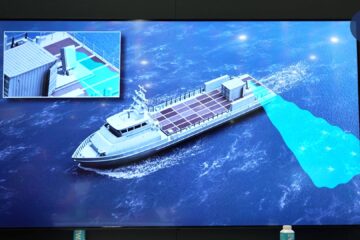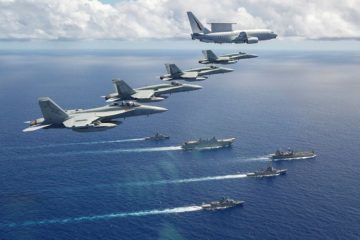By Commander, Task Force 71 Public Affairs
MALABAR is an annual maritime exercise that enhances planning, training, and employment of advanced warfare tactics between the Royal Australian Navy (RAN), Indian Navy (IN), Japan Maritime Self-Defense Force (JMSDF), and U.S. Navy which demonstrates the commitment between like-minded nations to upholding a rules-based maritime order in the Indo-Pacific.
This year’s exercise is hosted by the U.S. Navy and will take part in two phases. The first phase is an opportunity for the four Indo-Pacific navies to operate together in the Philippines Sea to strengthen their skills in combined maritime operations, anti-submarine warfare operations, air warfare operations, live-fire gunnery events, replenishments-at-sea, cross-deck flight operations, and maritime interdiction operations.
This year the exercise includes Naval Special Warfare forces during phase 1 to address irregular maritime threats and enhance integration with traditional naval forces.
“MALABAR 21 is an excellent opportunity to conduct multi-national training to hone warfighting and maritime security skillsets.”
“U.S. destroyers closely integrating with our partners and allies builds the foundation for regional security and stability that benefits all Indo-Pacific nations.”
Capt. Chase Sargeant, commander, CTF 71.
U.S. participants for phase one include Pacific Fleet’s top sub hunter, Arleigh Burke-class guided-missile destroyer USS Barry (DDG 52), Naval Special Warfare forces, maritime patrol and reconnaissance aircraft from Task Force 72, and Military Sealift Command’s (MSC) Henry J. Kaiser-class underway replenishment oiler USNS Rappahannock (T-AO 204).
“MALABAR 21 provides a wonderful opportunity to bolster our international partnerships.”
“Our team is excited to demonstrate [anti-submarine warfare] capabilities and to collaborate alongside our Indo-Pacific partners and allies. The lessons and tactics we share will enhance our strength and capabilities in supporting the common vision of a free and open Indo-Pacific.”
Cmdr. Chris Gahl, commanding officer, USS Barry.
Elements of the Royal Australian, Indian, Japanese, and American maritime forces routinely operate together in the Indo-Pacific, fostering a cooperative approach toward regional security and stability to deter malign influence.
Representing the Indian Navy is Shivalik-class multi-role stealth frigate INS Shivalik (F 47), and Kamorta-class anti-submarine warfare corvette INS Kadmatt (P 29). Representing the JMSDF is Izumo-class multi-purpose operation destroyer JS Kaga (DDH 184), Murasame-class destroyers JS Murasame (DD 101) and JS Shiranui (DD 120). Representing Australia is Anzac-class frigate HMAS Warramonga (FFH 152). Maritime patrol and reconnaissance aircraft are scheduled to include an IN P-8, JMSDF P-1, and U.S. P-8A.
Under Commander, U. S. Pacific Fleet, 7th Fleet is the U.S. Navy’s largest forward-deployed numbered fleet, and routinely interacts and operates with 35 maritime nations in preserving a free and open Indo-Pacific region.
-End-






